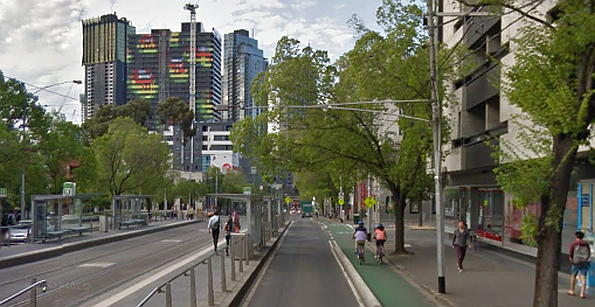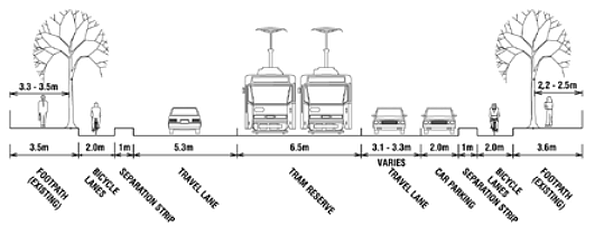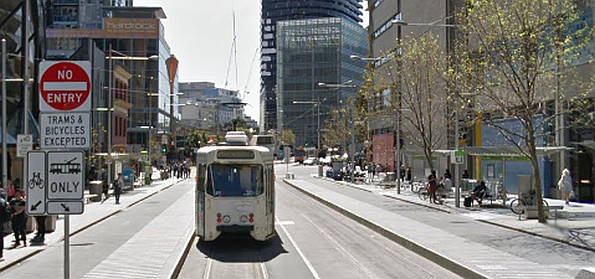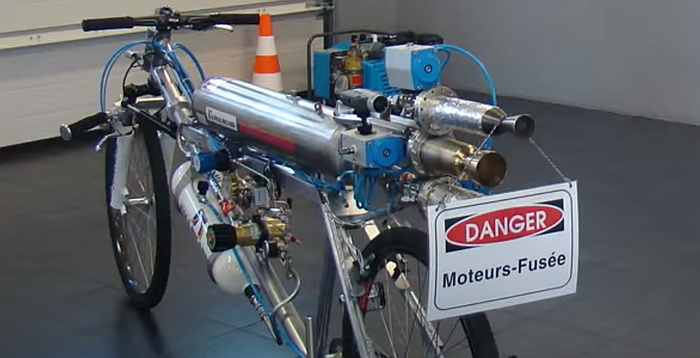Copenhagen style bicycle lanes are being considered by many towns now as they have proven hugely successful across numerous countries in keeping accident and mortality rates down. Denmark, it seems, has always been at the forefront of bicycle planning and they have truly stunning figures for per-capita bicycle usage.

Separated lane design in Melbourne, Australia
The City of Melbourne in Australia is considered up there too, being at the forefront of trying to find ways to ensure that every user of the road – pedestrians, cyclists and car drivers – can all be safe and share the same road infrastructure. In 2007, they introduced a new ‘separated lane’ design that was installed along the Northernmost end of Swanston Street, running from Franklin Street to Faraday Street over in Carlton. These bicycle lanes now run alongside the pedestrian footpath and car drivers have to park on the outside of the bicycle lanes. A one metre wide ‘safety island’ separates the bike lane from these parked cars. In many areas the tram system is also active, running in the centre of the road.

Accident and mortality rates reduced
Between 1998 and 2003, there were 11 serious accidents documented that involved cyclists and cars along this part of Swanston Street in Melbourne and many more minor injuries and accidents happened. When the new bicycle lane system went live, what originally was introduced as a trial quickly became a sensible solution, although there was some automotive chaos that ensued immediately after the road change, notably related to parking. Although we struggled to find exact figures, the accident rate is said to have dramatically reduced.
Wunderbar, wunderbar Copenhagenization!
It is commonly known as the ‘Copenhagen’ style of bike lane because the first documented bike lanes of this type were constructed in Denmark’s capital city. This style of bicycle, pedestrian and car separation, now nicknamed ‘Copenhagenization’, has been used successfully across Europe. The wide ‘island’ (essentially a raised kerb) helps to prevent cyclists from colliding with opened car doors or car occupants who have just exited their cars. It also provides important visual clues as to the proper road positioning for each road user, something that we, as cyclists, are all too aware often gets abused.
Is this the way forward for town cycling?
Bike separated lanes partition motorists from cyclists, allowing both to travel more safely on the same road networks and we can’t advocate this enough. We firmly believe that it should be part of any new urban road design structures. With this type of change there is a need for public education though. New methods and systems for our roads mean that drivers and pedestrians can get confused, have longer journeys and hence blame the ‘lycra clad brigade’ for their woes. We have seen it happen before and will doubtless see it again. However, if you experience a Copenhagen style layout from every user’s perspective, which we were lucky enough to do on a recent trip to Melbourne, you can see a modern, almost futuristic infrastructure that includes pedestrian, cyclist, motorcyclist, car driver and tram user in a safe and harmonious layout, albeit for a small percentage of the City’s large area.
With the City of Melbourne making such a commitment to encourage sustainable transport models we really do hope that this will be taken on board in many other towns and indeed countries.
I’ll leave you with this video that shows the bike lanes in Copenhagen. If you’re in most other countries, battling daily for your piece of road, this will probably look like heaven!


